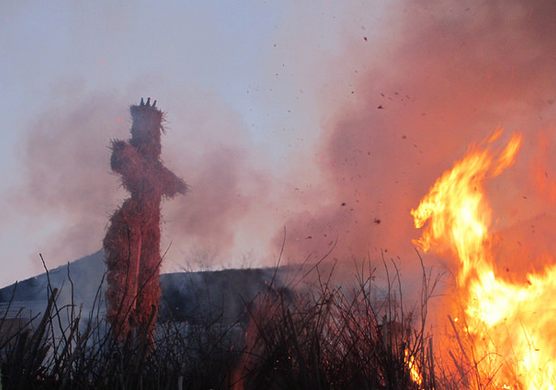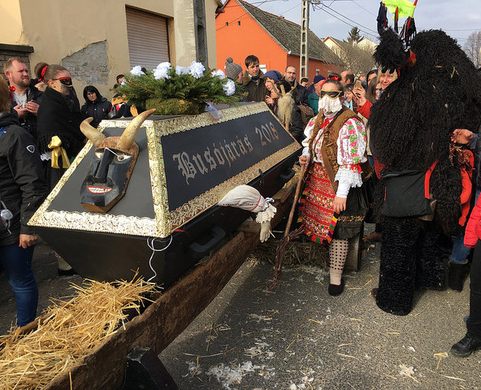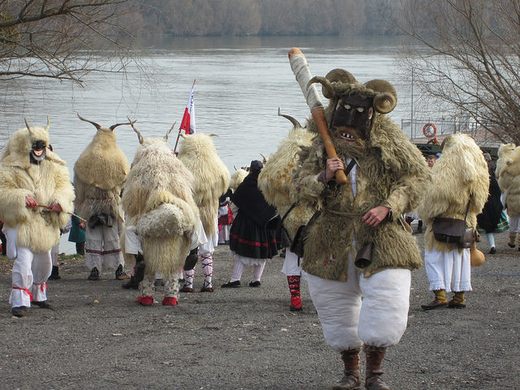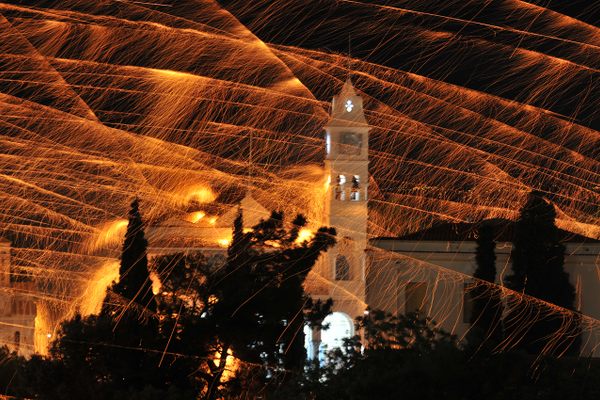Busójárás
Festival of Perpetual Life and Rebirth.
During February in the small Hungarian town of Mohács, the townspeople dress as horned monsters, wander the town swilling spiced wine and homemade pálinka, and make as much noise as humanly possible.
Lasting for approximately one week, and ending the day before Ash Wednesday, Busójárás is a celebration and affirmation of life for the Šokci, the ethnic Croatian minority population living in Mohács. During the penultimate night of the festival, a man made of straw is carried by cart into the center of town and then burned in a bonfire while the townspeople hold hands and dance the kolo in a circle around the blaze.
Busójárás has much in common with other carnival festivals that celebrate the end of winter. However, according to the official story, the roots of the festival date back to the Battle of Mohács in 1526. As legend has it, the villagers dressed up as fearsome monsters and drove away the invading Turkish army.
The male busos wear a traditional sheepskin cloak, women’s wool stockings under men’s pants, and a carved monster mask. As master buso mask-maker Engelbert Antal believes, the buso’s mask isn’t to simply change his outer appearance—instead, it is to alter the person behind the mask. As such, each mask is crafted specifically for each buso. The woolen stockings are part of a carnival pagan tradition embracing the duality of male and female. Although there are now a few female busos, women who participate in the festival typically dress up in clothing reminiscent of female Ottoman Turks. During Carnival time, all rules are ignored and everything is permitted, and some claim that the excesses of the celebration were key to the small Šokci population’s survival in Mohács, as no one could question the parentage of children conceived during Busójárás.
During the festival there are numerous traditional music performances, costumed folk dancing, buso parades, and in between scheduled events, general mayhem. Like every Carnival celebration, alcohol is consumed in abundance, and the busos are often very, very drunk. Visitors to Busójárás should be warned that it’s nearly impossible to witness the carnival without somehow being dragged into it. It’s common for adult spectators to have flour thrown on them, be offered drinks from large flasks of spiced wine, and to be groped and/or dry-humped (albeit for comic effect) by the busos.
Admission to the festival is free, although it’s best to arrange a place to stay ahead of time. Although it is possible to stay in Mohács itself, many visitors to the festival prefer to stay in one of the pensions available to rent in the nearby wine region of Villány.
Know Before You Go
Two hours from Budapest by car. It's also possible to take a bus to Mohács from Budapest's Népliget bus terminal.



























Follow us on Twitter to get the latest on the world's hidden wonders.
Like us on Facebook to get the latest on the world's hidden wonders.
Follow us on Twitter Like us on Facebook